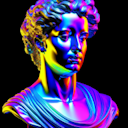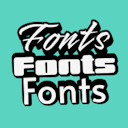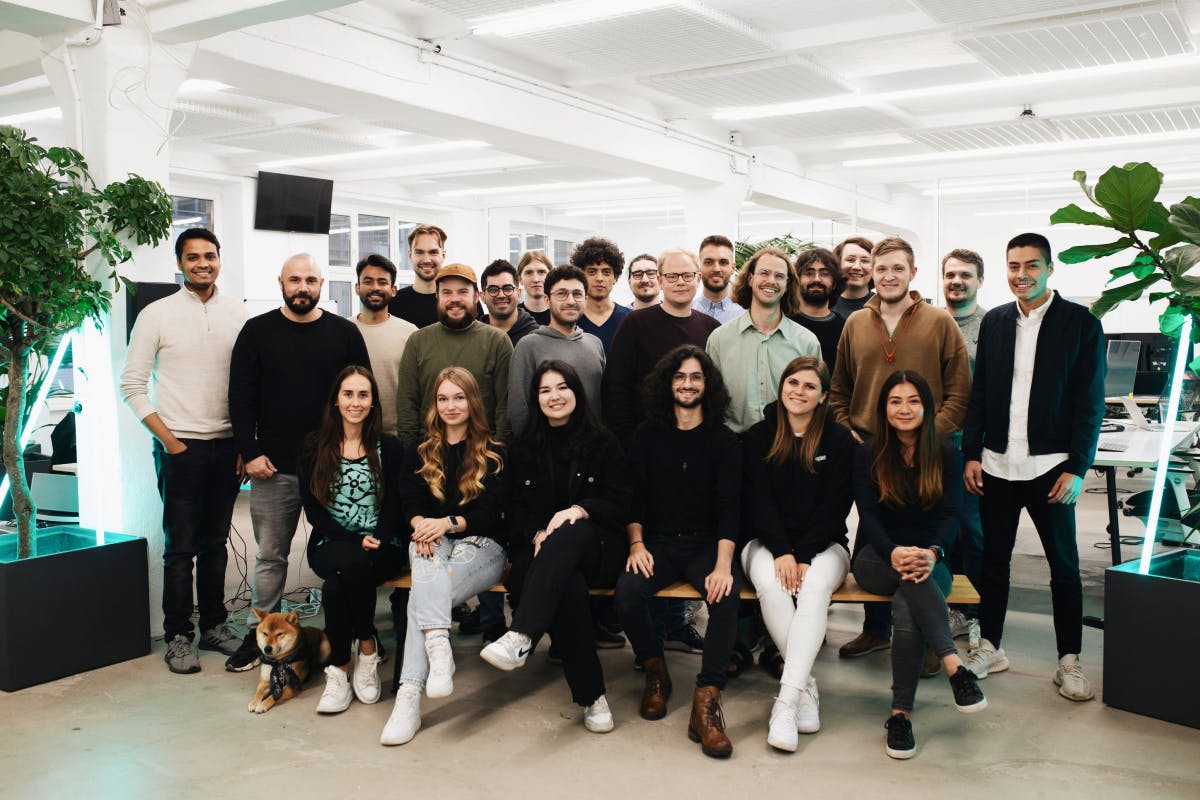Product
Templates
Resources
Company
Home
Blog
News
The Rise of AI-Powered Design Tools: What It Means for Designers
The Rise of AI-Powered Design Tools: What It Means for Designers

AI is transforming the graphic design industry at an unprecedented pace. Major breakthroughs occur several times a year, fueled by relentless research and innovation. New tools or significant upgrades seem to emerge monthly, continuously pushing the boundaries of what’s possible. In fact, the global market for AI in graphic design is projected to grow by nearly 28% annually by 2026, signalling a shift in how design work is done.
This rapid advancement raises important questions: What does this mean for designers? Are they already using AI-powered tools? How will the role of designer change as AI grows? And will this change be a positive or a negative shift for this creative profession.
The answers lie in how designers and businesses are using AI now, what their sentiments are, which graphic design tools are leading the charge, and how it’s affecting businesses. We’ve collected insights from various resources on the subject and compiled it here. With this information we’ll cover:
- How AI is being used for graphic design
- Are designers currently using AI and what are their sentiments?
- How will AI affect graphic design?
- What does the future look like for designers in an AI-powered world?
Below is a timeline highlighting the major milestones of AI relevant to artists and the graphic design industry.

The Evolution of AI in Design
Before diving in, let’s take a quick look at how AI has evolved in the design space thus far. AI's integration into the design industry has been nothing short of transformative. Historically, graphic design relied heavily on manual processes, with designers painstakingly adjusting every detail. However, the digital revolution set the stage for AI's entrance into the field, offering a way to automate these processes and optimize workflows. In a survey of over 4,000 marketing and creative leaders across nine countries, a whopping 75% revealed that generative AI is now a must-have in their toolkit.
One significant trend fueling AI's rise in design is the increasing demand for personalized, data-driven design. As businesses collect more data on consumer behavior, AI can analyze this information to create designs tailored to specific audiences. For example, AI tools (DALL-E is a good example of such a tool) can adjust visual elements based on a user's preferences, such as color schemes or layout styles, making the design process more customer-centric. Data collected through AI survey tools shows that AI is already significantly improving personalization in design.
This capability aligns with rising emphasis on personalized experiences in marketing, where 77% of marketers believe AI is crucial for maintaining a competitive advantage. Additionally, a CSAT survey tools report by Forbes revealed that 83% of companies claim using AI tools in their business strategies is a top priority.
And they're on the right track as these insights resonate with consumer sentiment.
Consumers increasingly believe generative AI can improve their experiences by providing faster and better AI customer service (65%), creating more personalized interactions based on their preferences (48%), and generating more exciting and creative experiences (36%). All this data points to significant brand growth potential by leveraging AI for user-focused design in marketing and retail. It’s not just about brand strength - it's about revenue growth too. Companies focusing on human-centered design in their AI efforts saw a 32% higher revenue growth.
The growth of AI in design is also driven by its potential to handle large volumes of work. As digital content proliferates, the demand for quick, high-quality designs has skyrocketed. For Shopify store owners, using a free Shopify theme detector alongside AI tools can help manage design updates efficiently and ensure their store’s appearance aligns with the latest trends. AI-powered tools can generate design variations much faster than humans, sometimes up to 50 times quicker, allowing designers to meet tight deadlines without compromising on quality. This speed and efficiency are essential in a world where visual content is increasingly the key to capturing consumer attention.
Let’s take a look at web design for example; the first impression of your brand from customers. As HubSpot puts it:
For many businesses, a website is undeniably critical for reaching new audiences - and is often the first impression someone will have of your brand.
”So it’s safe to say a lot of creative thinking, strategy, and consideration needs to be put into web design. And since a website is often the first place a customer goes to for new brands, websites need to be created and updated quickly. With so much weight on website design, you might be surprised to know that, currently, 93% of web designers have used AI tools for design-related tasks. Of those web designers surveyed:
- 58% indicate that they use AI to generate imagery or other media assets for a website.
- 50% use it to create complete web page designs.
- 49% use it to experiment with new design strategies or elements.
- 43% use AI to identify ways to make their designs better.
- 40% use it to track design performance or quality.
- 20% use it for auditing user experience.

Sentiment Around AI in Design
Today, AI isn’t just evolving - it’s entering a new phase where it learns, understands, and envisions. Most recently, the 2020s marked a significant turning point, with the widespread availability of AI art tools. These tools have altered the creation of AI-generated images, extending opportunities beyond academia and professional artists.
Studies find marketers and designers share mixed feelings and concerns about how AI will impact their work. But regardless of this, the majority who respond in surveys believe their work will benefit from AI. Not only that, but they’re already using it. In a study conducted by Adobe, they found that 50% of creative professionals are already using AI in their work. And additional studies reveal it's significantly boosting productivity and efficiency. Here are the facts:
The data reveals three key takeaways that suggest AI is proving beneficial to both designers and brands; AI in graphic design is increasing designer’s efficiency and accuracy, enhancing creativity and innovation, and improving audience satisfaction and appeal for brands.

Efficiency and Accuracy
- AI projects prioritizing user-friendly design see a 300% higher probability of success than those not.
- 80% agree that AI-powered tools reduce the minutiae of repetitive tasks
Creativity and Innovation
- 69% believe it’s enhancing their teams’ creativity
- 80% believe AI-powered tools free them up to focus on the more meaningful parts of their role, such as higher-level creative thinking, strategic planning and decision-making
- 82% of respondents believe generative AI will make life easier
- 82% believe they can be more creative in the future with generative AI.
Audience Appeal
AI-Powered Tools and the Changing Role of Designers
The rising concerns and focus around these tools has been on AI tools taking over the need for flesh and blood designers. But that’s not where the focus should be. Rather, it should be on how the role of designers is transforming; as well as what those designers can do about it.
AI-powered tools are fundamentally altering the day-to-day tasks of designers. In the past, a significant portion of a designer's time was spent on repetitive, labor-intensive tasks like resizing images, correcting colors, or adjusting layouts. These tasks, while essential, do not necessarily tap into the creative potential of a designer. AI-powered design tools like Adobe Sensei, Canva's Magic Resize and Kittl AI Image Generator, and Kittl CoPilot, are now automating these tasks, freeing designers to focus on more strategic and creative aspects of their projects. For those incorporating video content into their designs, using a video hosting solution can streamline workflow and enhance the user experience.
Today, the most widely used AI-powered design tool is Adobe Sensei, with 57% of designers using it.
With AI handling the grunt work, designers can take on more complex and creative challenges. For example, rather than spending hours fine-tuning the alignment of elements in a layout, designers can now focus on conceptualizing innovative design ideas, crafting unique visual narratives, and exploring new artistic styles. This evolution allows designers to become more strategic in their roles, using their expertise to drive the creative direction of projects rather than getting bogged down by technical details.
82% of respondents believe generative AI will make life easier, with a similar amount (82%) saying they can be more creative in the future with generative AI. At the same time, 72% believe that generative AI is powerful but will never match a human when it comes to creativity.
The takeaway here is that AI-powered tools are currently being utilised to take projects to the next level. It’s improving efficiency, streamlining processes, boosting quality, and enhancing customer experience.
How AI is Impacting Businesses
For businesses, the integration of AI in design represents a significant competitive advantage, which is often highlighted in competitive analysis. AI-driven designs are more effective and efficient, leading to better business outcomes. A study found that AI-driven designs are 35% more likely to be effective than those created by humans alone, largely due to AI's ability to analyze vast amounts of data and make data-driven decisions.
One of the most critical areas where AI is making an impact is in digital customer engagement. AI-powered tools can personalize designs and content to align with individual customer preferences, leading to higher engagement rates. For example, in a heat pump business, AI can analyze user data to determine the most effective color schemes, fonts, or imagery for a particular audience, creating designs that resonate more deeply with users and significantly boost community engagement by building a more connected and interactive brand experience.
Furthermore, AI's ability to automate routine tasks leads to significant cost savings for businesses. With AI handling time-consuming design processes, companies can reduce labor costs and allocate resources more efficiently. According to research, AI-powered design tools are expected to save businesses $16 billion in annual salaries globally. These cost savings, combined with the increased effectiveness of AI-driven designs, make AI an invaluable asset for businesses looking to optimize their operations and improve their bottom line.
In a 2022 survey by McKinsey, respondents who adopted AI in at least one function of their organization revealed that 22% of AI-related hires were for design specialist roles. This percentage is higher for AI high performing organizations, or organisations with advanced AI adoption across various functions. See the chart below of the top 3 departments that regularly use generative AI with a breakdown of the use cases.

As businesses increasingly recognize the transformative power of AI in creating personalized, data-driven designs, the expertise of AI design specialists has become essential. In the past year, the demand for AI design specialists has surged, placing them among the top 8 roles that organizations are actively hiring. These professionals are not only shaping the future of design but also driving innovation and competitive advantage across industries.
Why Human Designers Are Here To Stay
Human-made graphic design remains the foundation that influences AI's creative output.
AI systems learn from patterns, styles, and trends established by human designers, who bring unique creativity and cultural context to their work. While AI can generate designs and make predictions based on this data, the innovation, emotional resonance, and cultural relevance that drive the graphic design industry still stem from human creativity.
As AI evolves, human designers play a vital role in guiding its development, ensuring that the designs produced not only push boundaries but also deeply resonate with people. This is equally important in the realm of AI mobile development services, where human insight ensures innovation and user connection.
Beyond this, a tool is still a tool - not the heart and soul. Human designers weave empathy into their work to evoke human emotions due to superior and authentic emotional intelligence.

An AI & Human Alliance In Design
The ability to set trends, recognize what works and what doesn’t, and make decisions that resonate with audiences are inherently human qualities that AI has yet to master. And shouldn’t be the master of. Designers, with their creative vision and authority on style, remain the true directors of the design process, steering the course and making final decisions. While AI can assist in streamlining and innovating, it’s the human touch that knows when and how to refine a design to not only match audience preferences but establish new trends.
The future of graphic design will be shaped by those who can seamlessly integrate human creativity with AI, enhancing both to produce designs that are not only efficient but also deeply impactful.
Learn more about how to add AI-powered tools to your design workflow with our list of AI tools for graphic designers.
The Concerns of AI in Graphic Design
The potential for AI to infringe on copyright, spread misinformation, or even defame individuals is high. This has sparked urgent questions about how to protect creators' rights, ensure accurate information, and maintain societal trust in a world increasingly shaped by AI-generated content. The threat of technological unemployment is also significant, as AI tools capable of generating art and design challenge the livelihoods of traditional artists.
A recent clash between Scarlett Johansson and OpenAI highlighted fears of artists being mimicked or replaced by AI, underscoring broader ethical and legal challenges.
OpenAI, initially a non-profit, has shifted toward a profit-driven model, raising doubts about its commitment to responsible practices. While the industry has pledged to create safe AI products, critics argue that voluntary measures are insufficient without legally binding regulations. The EU's AI Act, the first law of its kind, aims to impose tougher regulations, but the challenge remains in ensuring global cooperation and effective enforcement.
As AI innovation outpaces regulation, the need for robust, enforceable guidelines becomes increasingly urgent.
Yet, just as society adapted to the challenges of the internet through new laws, ethical guidelines, and technological solutions, there's hope we can overcome these challenges posed by AI. History shows that with every disruptive technology, there comes a period of adjustment where we learn to balance innovation with responsibility.
Predicting the Future of Graphic Design: The Role of AI
Looking ahead, AI is set to play an even more integral role in the graphic design industry. The global AI-powered design market is expected to grow at a compound annual growth rate (CAGR) of 27.89% from 2021 to 2026, indicating that AI will continue to be a driving force in the evolution of design.
One of the most exciting prospects for AI in design is its potential to democratize the creative process. As AI tools become more sophisticated, they are also becoming more accessible to non-designers. This trend could lead to a future where anyone, regardless of their design expertise, can create professional-quality designs using AI-powered tools. This is an exciting prospect, but naturally, there’s a flip side to this notion. This democratization of design raises the potential to disrupt the industry, as businesses and individuals gain the ability to produce high-quality visuals without needing to hire a professional designer.
AI is also likely to drive the next wave of design innovation. With AI's ability to analyze vast amounts of data, predict trends, and generate new ideas, we can expect to see more designs that are hyper-personalized and data-driven. Designers can utilize a free AI search engine to stay on top of emerging trends and quickly integrate new concepts into their work. For example, AI could be used to create designs that adapt in real-time based on user interactions, providing a more engaging and dynamic experience for users.
In addition, AI's role in automating complex design tasks will likely continue to expand. As AI technology advances, we can expect to see more tools that can handle increasingly sophisticated design processes, such as 3D modeling, animation, and interactive design. This expansion will enable designers to tackle more complex projects and push the boundaries of what is possible in design.

AI in Graphic Design: Key Takeaway
From automating routine tasks to enhancing creativity and improving business outcomes, AI is becoming an indispensable tool for designers and businesses alike. As AI continues to evolve, its impact on the design industry will only grow, paving the way for a future where AI and human creativity work together to create innovative, effective, and impactful designs.
For designers looking to stay ahead in this rapidly changing industry, embracing AI is not just an option - it's a necessity.
Sign up with Kittl and start using AI-powered design companion tools today!
See the AI companion tools that Kittl offers, including AI Text-to-Image Generation, AI Vectorizer, AI Writing, and more!
Additional Statistics on AI in Graphic Design
- According to a survey, 62% of designers believe that AI will help them be more creative in their work. (1)
- In a survey of marketing professionals, 88% said that AI is important for improving the customer journey. (2)
- 75% of graphic designers say that AI helps them save time and boost their productivity. (3)
- The most widely used AI-powered design tool is Adobe Sensei, with 57% of designers using it. (4)
- Canva's Magic Resize feature, which uses AI to automatically adjust designs to different sizes, has been used by over 2 million people. (5)
- AI-driven designs are 35% more likely to be more effective and efficient than human-created designs. (6)
- In a survey, 77% of marketers believed that AI is crucial for their company's competitive advantage. (7)
- 61% of graphic designers believe that AI can help them focus on more creative tasks instead of repetitive ones. (8)
- 42% of design and marketing professionals use AI for content personalization. (9)
- 82% of businesses that use AI say it has resulted in cost savings. (10)
- 85% of marketers who use AI say it has increased their efficiency. (11)
- The global AI-powered design market is expected to grow at a CAGR of 27.89% from 2021 to 2026. (2)
- In a survey, 68% of designers said that AI has made their work more enjoyable. (12)
- 47% of design and marketing professionals use AI for image recognition and tagging. (11)
- 84% of businesses using AI say it has improved their customer service. (10)
- 53% of designers use AI for automated design generation. (4)
- AI-driven designs have shown a 62% increase in engagement compared to human-created designs. (13)
- 64% of graphic designers believe that AI will improve their overall design process. (8)
- AI-powered design tools are expected to save businesses $16 billion in annual salaries globally. (14)
References:
- Adobe. (2020). Creativity and the Future of Design.
- Forbes Insights. (2020). AI and the Modern Marketer: How a CMO's Role is Evolving with Technology.
- 99designs. (2019). Design Without Limits: How AI is Impacting the Design Industry.
- Adobe. (2019). Creative Intelligence: Design and AI.
- Canva. (2021). Magic Resize: The Story Behind the World's Most Popular Design Hack.
- Forbes Insights. (2018). Artificial Intelligence in Marketing: The Future is Here.
- PwC. (2018). AI Impact Survey.
- TechRepublic. (2019). 10 ways AI is revolutionizing the design industry.
- Adobe. (2019). State of Creative and Marketing Collaboration.
- Infosys. (2019). Amplifying Human Potential: Towards Purposeful AI.
- Forrester. (2020). The State Of AI In Marketing In 2020.
- Creative Review. (2019). How AI is changing design.
- Splendidbits. (2019). Enhancing Customer Engagement with AI-driven Design.
- Adobe. (2020). Creativity: The Fuel for AI.
Related articles

Design
AI Tools for Graphic Designers
In this blog post, we'll take you through a list of popular AI tools for graphic designers that are ...

News
Kittl AI Image Sets: Create Your Own Custom Graphics Packs
We're excited to introduce Kittl AI Image Sets - create packs of graphics in a custom style! We've a...

AI Graphic Design
The Ultimate Guide to AI Image Generation
Artificial intelligence has revolutionized multiple sectors, and the design world is no exception. A...















